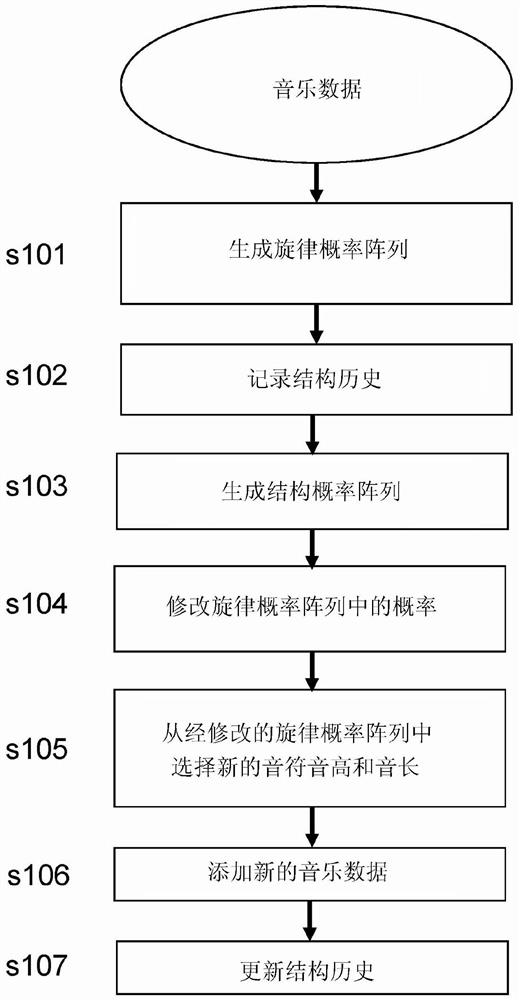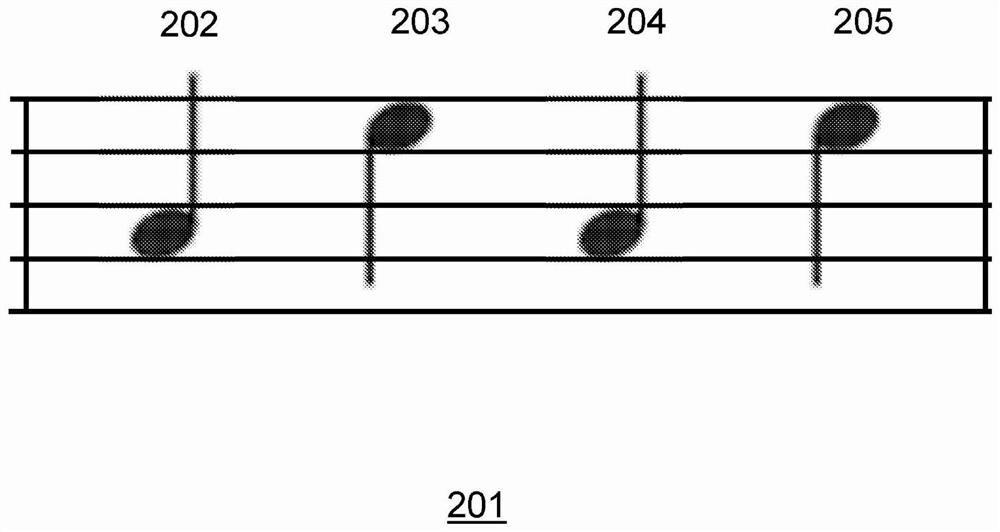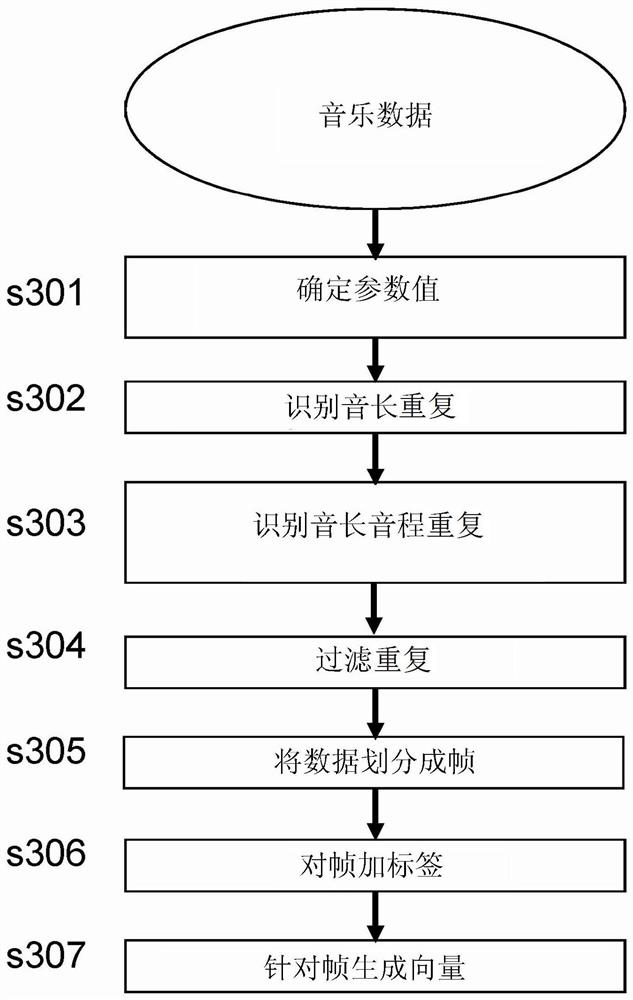Method of generating music data
A music and generator technology, applied in the field of generating music fragments, can solve the problems of lack of music quality and variation
- Summary
- Abstract
- Description
- Claims
- Application Information
AI Technical Summary
Problems solved by technology
Method used
Image
Examples
example 1
[0175] Example 1: Fixed beat strength based on sections
[0176]In this case, each 4 / 4 bar has the same sequence of beat intensities, usually the first beat (frame 1) has a value (eg 0) and the 3rd quarter note beat (frame 9) has A value (such as 1), a value (such as 2) for the 2nd quarter-note beat and a 4th quarter-note beat (frames 5 and 13), with the same sequence of sixteenth notes in between ( In this case 4 3 4). This will make each bar have a sequence like this (intensity scale 0 to 4, with 0 being the "strongest" beat):
[0177] 0 4 3 4 2 4 3 4 1 4 3 4 2 4 3 4
[0178] This is to reflect the fact that, for the four quarter-note beats of bar 4 / 4, the rhythmic intensities are as follows:
[0179] Strong(0) Weak(2) Semi-strong(1) Weak(2)
example 2
[0180] Example 2: Hyper Beat Intensity (Super BS)
[0181] This is a combination of the aforementioned beat strength (fixed beat strength) with the concept that each bar has its own overall strength value. The result is that each frame's beat intensity value is adjusted due to the effect of "beat intensity". In particular, the first frame of each section is changed to be equal to the section strength of that section, and the remaining frames are also adjusted.
[0182] For example, the knot strength for an 8-knot cycle could be:
[0183]
[0184] Using the following method, the resulting hyperbeat intensity for each frame in the first section is thus:
[0185]
[0186] The reasoning for this hyperbeat strength will now be explained. In other words, in addition to beat strength within individual bars, the concept of section strength or "bar strength" is introduced, extending the concept of beat strength to the bars themselves. For example, the same idea could be appli...
PUM
 Login to View More
Login to View More Abstract
Description
Claims
Application Information
 Login to View More
Login to View More - R&D
- Intellectual Property
- Life Sciences
- Materials
- Tech Scout
- Unparalleled Data Quality
- Higher Quality Content
- 60% Fewer Hallucinations
Browse by: Latest US Patents, China's latest patents, Technical Efficacy Thesaurus, Application Domain, Technology Topic, Popular Technical Reports.
© 2025 PatSnap. All rights reserved.Legal|Privacy policy|Modern Slavery Act Transparency Statement|Sitemap|About US| Contact US: help@patsnap.com



